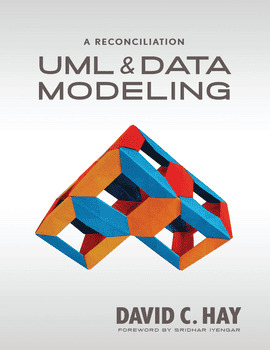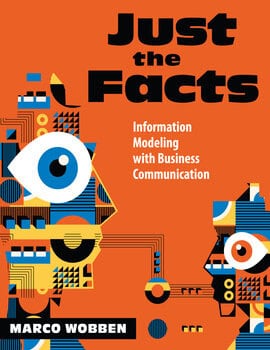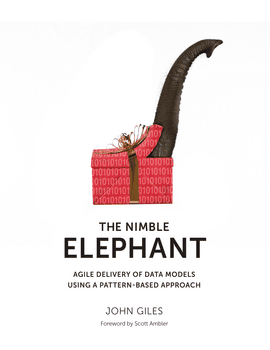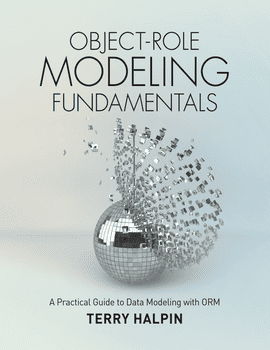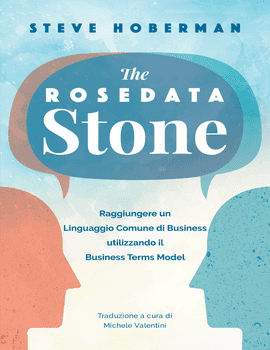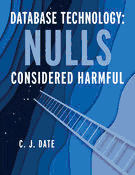UML and Data Modeling
UML and Data Modeling, by David Hay
Here you will learn how to develop an attractive, easily readable, conceptual, business-oriented entity/relationship model, using a variation on the UML Class Model notation.
Topics
Chapter 1: Introductions
The Structure of the Book
Observations
Introduction for Data Modelers
Introduction for UML Modelers
Combined Introduction
Historical Threads
Architectural Framework
Views of the Business
Views of Technology
Business Owner’s View
Architect’s View
Designer’s View
Summary
Chapter 2: UML and Essential Data Models
Impedance Mismatch
Architecture vs. Object-oriented Design
Limiting Objects to Business Objects
Behavior
Relationships and Associations
Entity/Relationship Predicates
Specifying Role Names in UML
A Fundamental Change to UML
One Solution: Stereotypes
Second Solution: Conversion
Domains, Data Types, and Enumerations
Namespaces
Object Oriented Design vs. Relational Database Design
Persistent Data
Inheritance
Security
Summary
Chapter 3: How to Draw an Essential Data Model in UML
Summary of the Approach
1. Show Domain-Specific Entity Cases Only
2. Use Symbols Selectively
Use Appropriate Symbols
Class (Entity Class)
Attribute
Association (Relationship)
Cardinality
Exclusive or (XOR) Constraint
Use Some UML-specific Symbols with Care
Entity Class Sup-types and Relationship Sub-types
Derived Attributes
Package
Add One Symbol
Do Not Use Any Other Symbols
3. Define Domains
4. Understand “Namespaces”
5. Follow Display Conventions
Name Formats
Role Positions
“Exclusive or” Relationship Constraint
Cardinality Display
Summary
Chapter 4: Aesthetic guidelines and Best Practices
Introduction – Aesthetic Considerations
Place Sub-types Inside Super-types
Condensed Entity/Relationship Approach
The UML (and that of some entity/relationship notations) Approach
One Problem
Solution
Constraints
Categories
Eliminate Bent Lines
Orient “Many” End of Relationships to Top and Left
Presentation
Summary
Chapter 5: An Example: Party
Parties
Party Relationships
Party Identifiers and Names
Constraints
Summary
Appendix A: A Brief Summary of The Approach
Appendix B: A History of Modeling Objects and Data
Data Processing
Early Programming Languages
Object-oriented Programming Languages
Structured Techniques
Structured Programming
Structured Design
Data Architecture
Early Data Modeling
CODASYL
Dr. Edward Codd (1970)
Early Relational Databases
Three Schema Architecture (1972)
Dr. Peter Chen (1976)
Business Analysis
Structured Analysis
Business Process Reengineering
Later Data Modeling
Richard Barker and Harry Ellis (1980)
IDEF1X
Object-Role Modeling (ORM)
About Discipline in Data Modeling
Data Model Patterns
David Hay (1995)
Len Silverston, Kent Graziano, Bill Inmon (1997)
Architecture Frameworks
John Zachman (1979)
David Hay (2003, 2006)
Business Rules
Ron Ross (1987)
Business Rule Group (1995)
Object Management Group (2008)
Data Management
Early Object Modeling
Shlaer & Mellor (1988)
Coad and Yourdon (1990)
Rumbaugh, et. al. (1991)
Embley/Kurtz/Woodfield (1992)
Booch (1994)
Object Patterns
Design Patterns
Martin Fowler – Analysis Patterns
UML
The Internet and the Semantic Web
Computer Time-sharing
ARPANET
The Internet
The World Wide Web
The Semantic Web
Summary – The “Reconciliation”
This book has two audiences:
- Data modelers (both analysts and database designers) who are convinced that UML has nothing to do with them; and
- UML experts who don’t realize that architectural data modeling really is different from object modeling (and that the differences are important).
David Hay’s objective is to finally bring these two groups together in peace.
Here all modelers will receive guidance on how to produce a high quality (that is, readable) entity/relationship model to describe the data architecture of an organization. The notation involved happens to be the one for class models in the Unified Modeling Language, even though UML was originally developed to support object-oriented design. Designers have a different view of the world from those who develop business-oriented conceptual data models, which means that to use UML for architectural modeling requires some adjustments. These adjustments are described in this book.
David Hay is the author of Enterprise Model Patterns: Describing the World, a comprehensive model of a generic enterprise. The diagrams were at various levels of abstraction, and they were all rendered in the slightly modified version of UML Class Diagrams presented here. This book is a handbook to describe how to build models such as these. By way of background, an appendix provides a history of the two groups, revealing the sources of their different attitudes towards the system development process.
If you are an old-school ER modeler and now find yourself having to come up to speed on UML to get that next job (or keep the current one), this is your guidebook to success. If you are a long time object oriented programmer who has to interact with data modelers, this book is for you too. David has done the hard work of mapping out how to do a logical entity relationship model using standard (and accepted) UML diagram components. This book shows you step-by-step, with ample examples, how to get from here to there with the least pain possible for all concerned.
Kent Graziano
Certified Data Vault Master and Oracle ACE
Past-President of ODTUG & RMOUG
Brilliantly organized: three books hidden in one cohesive work. Not withstanding the tremendous value provided by cross-training data architects/modelers and object modelers/architects, making each better at what they do, Appendix B presents an absolutely awesome concise, yet detailed, history of modeling objects and data that clearly documents the differences in the approaches over the years and helps bring it all into perspective. This book is packed with useful information. Even the footnotes add clarity and offer interesting and often humorous editorial insight making it a fun read. Whatever viewpoint the reader is coming from this book has something to offer as long as the reader maintains an open mind.
Roland Berg
Senior Architect
Diligent Consulting, Inc.
San Antonio, Texas
About Dave
Since the early 1980s, David Hay has been a pioneer in the use of process and data models to support strategic planning, requirements analysis, and system design. He has developed enterprise models for many industries, including, among others, pharmaceutical research, oil refining and production, film and television, and nuclear energy. In each case, he found the relatively simple structures hidden in formidably complex situations. Mr. Hay has published several books and numerous articles. He is a frequent speaker at professional society conferences.
Faculty may request complimentary digital desk copies
Please complete all fields.
